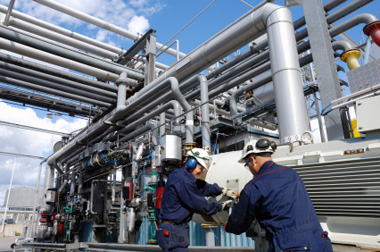Gas Cylinder Safety
Before Purchasing Any MESA Specialty Gas Cylinders:
- All personnel handling compressed gases must be familiar with the procedures recommended in the Safety Data Sheet (SDS).
- Proper instruction and training must be provided for all personnel handling compressed gases.
- Isolate a well-ventilated, safe and secure area for cylinder inventory.
- Identify a separate area for storing cylinders to be returned. Check this area routinely to confirm there are no cylinders that must be attended to between pick up periods.
- Minimize potential hazards by always ordering the smallest quantity required.

When your MESA Specialty Gas Cylinders Arrive:
- Inspect incoming cylinders for leaks and to ensure you have received the correct product.
- Review the Material Safety Data Sheet.
- Move gas cylinders using an approved cylinder hand truck.
- Secure all gas cylinders properly during use and in storage.
- Valve plugs and caps need to be safely stored after removal so they may be replaced when the cylinder is returned to MESA.
- Monitor all gas cylinder storage locations for leaking gases. Use gas detection devices designed for the particular requirement.
- Be familiar with all emergency procedures and equipment necessary to deal with leaking gas cylinders. (Fire extinguishers, breathing apparatus, etc.)
- Properly ground and secure any gas cylinders containing flammable or hazardous materials.
- Control equipment for oxidizing gases and mixtures must be free of any non-oxidant compatible lubricant, i.e., petroleum-based oils and greases.
- Use proper check valves and purge venting with all hydroscopic corrosive gases
When MESA Specialty Gas Cylinders are Empty, Partially Full, and/or No Longer Needed
- Whenever the pressure of a gas cylinder is reduced to the minimum required working pressure, close the cylinder valve before detaching from the apparatus and relieve pressure in all connecting lines and control equipment in a safe manner.
- Replace protective valve outlet plugs and caps.
- Disconnect cylinders from securing clamps.
- Move cylinders to the proper storage location using an approved cylinder.
- Unneeded gas cylinders should be classified, marked, and returned as soon as possible.
If a Problem Should Occur:
Even when taking all necessary gas cylinder safety precautions, accidents can occur. By following our simple guidelines, you and your employees will be prepared to deal with many emergency situations involving compressed gas cylinders.
Pre-Emergency Planning
Dealing with compressed gas emergencies begins with planning. An emergency response plan should be in place. The plan should include:
- Emergency telephone numbers
- Emergency response organizational charts
- Emergency procedures
- Listing of key personnel
- Training schedules and documentation
- Hazardous materials lists (including storage locations, quantities, etc.)
- Emergency response equipment lists
- Facility maps
In addition to the above, be sure that local emergency services (fire department, emergency medical services, police, and hazardous materials response teams) are aware of the hazardous materials at your facility, their location, and their hazards.
Response Guidelines
The following gas cylinder safety guidelines are based on the four gas hazard categories: inert, flammable, corrosive, and toxic. These guidelines provide only the basic information and should not be substituted for your own knowledge and judgment. You are advised to consult local fire codes and federal and state environmental regulations OSHA, SARA, RCRA…etc.
Fire
Consult the most current version of the SDS for the product.
The SDS contains information and procedures to follow if a fire should occur. Some of these procedures can include the following:
- Withdraw immediately in case of rising sound from venting safety device or discoloration of tank, as contents may be ignited by heat, sparks, and/or flames
- If leak cannot immediately be stopped, let all contents burn completely
- For small fires, use dry chemical or CO2 extinguishers
- For large fires, use water spray, fog, or foam extinguishers
- Move container from fire area if you can do so without risk
- Cool containers that are exposed to flames with water from the side until well after the fire is out
- For massive fire in cargo area, use unmanned hose holder or monitor nozzles
Other considerations, when dealing with flammable gas mixtures:
- Flammable vapor may spread away from the site of incident in the event of a spill
- Vapor explosion and poison hazard exit whether indoors, outdoors, or in sewers
- Some flammable materials may burn, even if they do not ignite readily
- Any mixture with fuels may explode
Health Hazards
For Toxicity information and Hazard identification, consult the current SDS.
May be fatal if inhaled, swallowed, or absorbed through skin
Contact may cause burns to skin and eyes
Some liquid components may cause frostbite
Runoff from fire control or dilution may cause pollution
Vapors may cause dizziness or suffocation
Fire may produce toxic or poisonous gases
Spill or Leak
For accidental release measures, disposal considerations, and ecological information, consult the current SDS.
Stop leak if you can do so without risk
No flares, smoking, or flames in hazard area
Do not touch spilled materials
Use water spray to reduce vapors
Isolate area until gas has dispersed
Keep combustibles (wood, paper, oil, etc.) away from spilled materials
